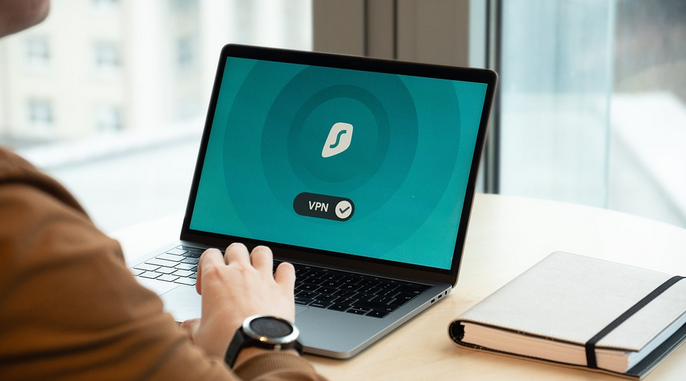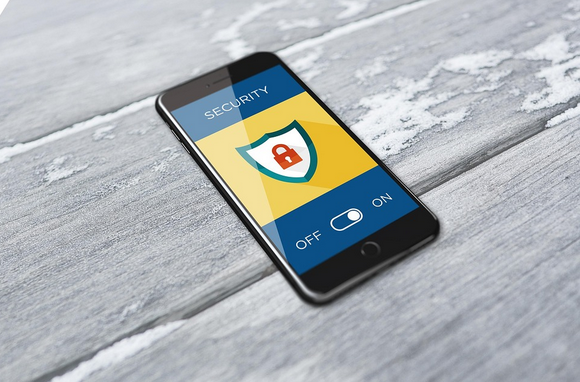How to Protect Your Privacy in the Age of Hyperconnectivity
In today’s world, where everything is interconnected and data flows freely across digital landscapes, protecting your privacy has never been more crucial. As we share snapshots of our lives on social media, conduct important transactions online, and communicate through various platforms, the lines between public and private can become blurred. With every click and tap, our digital footprints expand—often without us even realizing it. So how do you navigate this hyperconnected reality while safeguarding what matters most? The answer lies in proactive strategies that empower you to take control of your personal information. Let’s dive into practical tips for enhancing your privacy in an age where sharing is often instinctive but discretion should be deliberate.
Tips for Protecting Your Digital Footprint

Being mindful of your digital footprint is the first step toward privacy protection. Start by regularly auditing your online accounts. Identify what information you’ve shared and consider removing anything unnecessary. Next, think before you share. A casual post might seem harmless, but it can reveal more than intended about your habits or location. Use privacy-focused search engines instead of mainstream ones to limit data tracking. These alternatives often don’t store personal information, offering a more secure browsing experience. Also, be cautious with public Wi-Fi networks. They may expose your data to prying eyes. Whenever possible, use a VPN for an added layer of security when accessing sensitive sites on these connections.
Using Technology to Enhance Privacy
Technology can be a powerful ally in the quest for privacy. With various tools available, you can take control of your digital world. Consider using virtual private networks (VPNs). They encrypt your internet connection and mask your IP address, making it harder for snoopers to track your online activities. This adds a layer of security when browsing public Wi-Fi networks. Encryption software is another game-changer. It ensures that sensitive files remain unreadable to anyone without access rights. Whether it’s personal documents or business data, encryption keeps prying eyes at bay. Browser extensions focused on privacy are also worth exploring. Tools like ad blockers and tracker removers help limit the amount of data gathered by advertisers and websites as you surf the web. By integrating these technologies into your daily routines, you actively enhance your privacy while enjoying all that the digital age has to offer.
The Importance of Strong Passwords and Two-Factor Authentication

Strong passwords are your first line of defense against unauthorized access. A complex password, ideally a mix of letters, numbers, and symbols, makes it significantly harder for hackers to crack your accounts. Two-factor authentication adds an extra layer of security. Even if someone guesses or steals your password, they won’t have access without the second verification form. This could be a code sent to your phone or an authenticator app. Many platforms now offer 2FA as standard practice. Embrace this option wherever possible; it’s simple yet effective in safeguarding sensitive information. Regularly updating your passwords further enhances protection. Avoid using easily guessed phrases like birthdays or names—these can be found through social media profiles.
Protecting your privacy in today’s hyperconnected world is crucial. With every click, share, and post, you leave a digital footprint that can be tracked and analyzed. By implementing the tips mentioned above, you can take significant steps to safeguard your personal information. As we navigate this interconnected landscape, staying informed about best practices will help maintain our privacy while still enjoying the benefits of technology. Embrace these strategies and make them part of your daily routine for a safer online experience.…




 Do you love streaming your favorite series on IPTV? Personalization is key. One way to enhance your viewing experience is by tweaking your personalization recommendations. By fine-tuning these settings, you’ll be able to ensure that the content suggested to you aligns more closely with your interests and preferences. To get started, take some time to explore the customization options within your iptv platform.
Do you love streaming your favorite series on IPTV? Personalization is key. One way to enhance your viewing experience is by tweaking your personalization recommendations. By fine-tuning these settings, you’ll be able to ensure that the content suggested to you aligns more closely with your interests and preferences. To get started, take some time to explore the customization options within your iptv platform. Did you know that in some IPTV services, you can customize their interface and make them super cute or cool, anything you like? You see, choosing a theme or skin that resonates with your style preferences can not only add a personal touch but also make navigation more enjoyable. By changing up the overall look of your IPTV interface, you can create a visually appealing environment that reflects your unique personality.
Did you know that in some IPTV services, you can customize their interface and make them super cute or cool, anything you like? You see, choosing a theme or skin that resonates with your style preferences can not only add a personal touch but also make navigation more enjoyable. By changing up the overall look of your IPTV interface, you can create a visually appealing environment that reflects your unique personality.
 Choosing the right device is crucial for a seamless and enjoyable experience when it comes to online streaming. Gone are the days of being tied down to your living room TV – now you can stream on various devices such as smartphones, tablets, laptop, smart TVs, and gaming consoles. One important factor to consider is the screen size. Investing in a smart TV might be ideal if you prefer watching movies or TV shows on a larger screen.
Choosing the right device is crucial for a seamless and enjoyable experience when it comes to online streaming. Gone are the days of being tied down to your living room TV – now you can stream on various devices such as smartphones, tablets, laptop, smart TVs, and gaming consoles. One important factor to consider is the screen size. Investing in a smart TV might be ideal if you prefer watching movies or TV shows on a larger screen.
 One of the significant advantages of switching to a USA number for your WhatsApp account is accessibility. With a USA number, you can reach out to anyone residing in the USA with ease. You will also be eligible to access various features only available to USA users, such as Facebook Marketplace. Furthermore, if your work involves communicating with USA residents or businesses, having a USA number can make communication more straightforward.
One of the significant advantages of switching to a USA number for your WhatsApp account is accessibility. With a USA number, you can reach out to anyone residing in the USA with ease. You will also be eligible to access various features only available to USA users, such as Facebook Marketplace. Furthermore, if your work involves communicating with USA residents or businesses, having a USA number can make communication more straightforward.

 Before you begin the process of creating an application, it is essential first to consider what the purpose of the application will be. That is, what are you hoping to achieve by making this application? Are you looking to create a simple tool for yourself or your team to use internally? Or are you looking to create a product you can sell to customers? Your answer to this question will guide many of the choices you make during the application development process.
Before you begin the process of creating an application, it is essential first to consider what the purpose of the application will be. That is, what are you hoping to achieve by making this application? Are you looking to create a simple tool for yourself or your team to use internally? Or are you looking to create a product you can sell to customers? Your answer to this question will guide many of the choices you make during the application development process. Once you know your target audience, you need to decide which platforms to support. You should consider the number of devices your target audience uses and the operating system they are running. It’s important to remember that your app will need to be compatible with both new and old versions of the OS. It would be best if you also decided whether you want to support multiple languages.
Once you know your target audience, you need to decide which platforms to support. You should consider the number of devices your target audience uses and the operating system they are running. It’s important to remember that your app will need to be compatible with both new and old versions of the OS. It would be best if you also decided whether you want to support multiple languages. It would be best if you also thought about how you will make money from your app. There are a few ways to do this, such as charging for downloads, offering in-app purchases, or displaying ads. Each has its pros and cons, so you’ll need to decide which is the best option for your app. Deciding to make an application is a weighty decision and not one that should be taken lightly. We hope this article has given you some things to consider as you move forward with the decision-making process.…
It would be best if you also thought about how you will make money from your app. There are a few ways to do this, such as charging for downloads, offering in-app purchases, or displaying ads. Each has its pros and cons, so you’ll need to decide which is the best option for your app. Deciding to make an application is a weighty decision and not one that should be taken lightly. We hope this article has given you some things to consider as you move forward with the decision-making process.…





 High Level of Engagement
High Level of Engagement
 Signals from your security camera directed to your smartphone have advantages than when they are directed to a TV monitor. With a mobile user clicking his smartphone for an average of 2,617 times a day, it is congruent that your security camera is checked over the same number of times. For a TV monitor, someone has to sit in front of it to be able to keep account on what is happening.
Signals from your security camera directed to your smartphone have advantages than when they are directed to a TV monitor. With a mobile user clicking his smartphone for an average of 2,617 times a day, it is congruent that your security camera is checked over the same number of times. For a TV monitor, someone has to sit in front of it to be able to keep account on what is happening. Drilling holes in your walls are eliminated when you choose wireless security cameras unlike when you choose CCTV. You will not be exposing your home from dust as a result. Wired security cameras are easier to install which means you can have less than one day with the installation crew or you can install it by yourself. When installing wired CCTV, it may take more days, and you may not be able to do away with all the discomfort.
Drilling holes in your walls are eliminated when you choose wireless security cameras unlike when you choose CCTV. You will not be exposing your home from dust as a result. Wired security cameras are easier to install which means you can have less than one day with the installation crew or you can install it by yourself. When installing wired CCTV, it may take more days, and you may not be able to do away with all the discomfort.
 Capture the Right Level Details
Capture the Right Level Details
 Microphone
Microphone
 Before you start hunting for your laptop, you need to make it clear on why you want to get a laptop, is it for working remotely? Is it to edit videos and images?
Before you start hunting for your laptop, you need to make it clear on why you want to get a laptop, is it for working remotely? Is it to edit videos and images?  And here comes the fun part, which is budgeting. You have to know how much that you are willing to spend on the laptop. Remember that you’re
And here comes the fun part, which is budgeting. You have to know how much that you are willing to spend on the laptop. Remember that you’re 
 Practice makes perfect, and it goes to your job, and also the way you play video games. Make sure to practice and keep playing because it’s the basis on how you can get better at video games. Remember to try new things while you play, who knows that you’ve skipped on potions or a weapon that made your game way harder than it should be. Start from the easiest level and then slowly move to a harder one to challenge yourself. If you’re stuck in a level that you can’t beat, don’t give up and keep trying.
Practice makes perfect, and it goes to your job, and also the way you play video games. Make sure to practice and keep playing because it’s the basis on how you can get better at video games. Remember to try new things while you play, who knows that you’ve skipped on potions or a weapon that made your game way harder than it should be. Start from the easiest level and then slowly move to a harder one to challenge yourself. If you’re stuck in a level that you can’t beat, don’t give up and keep trying.